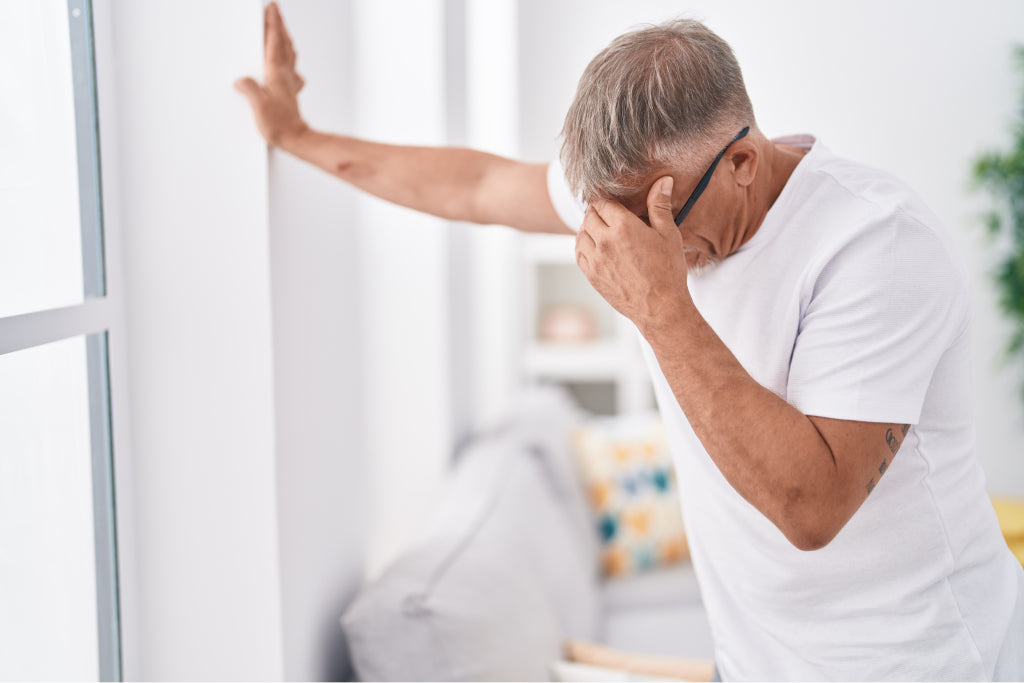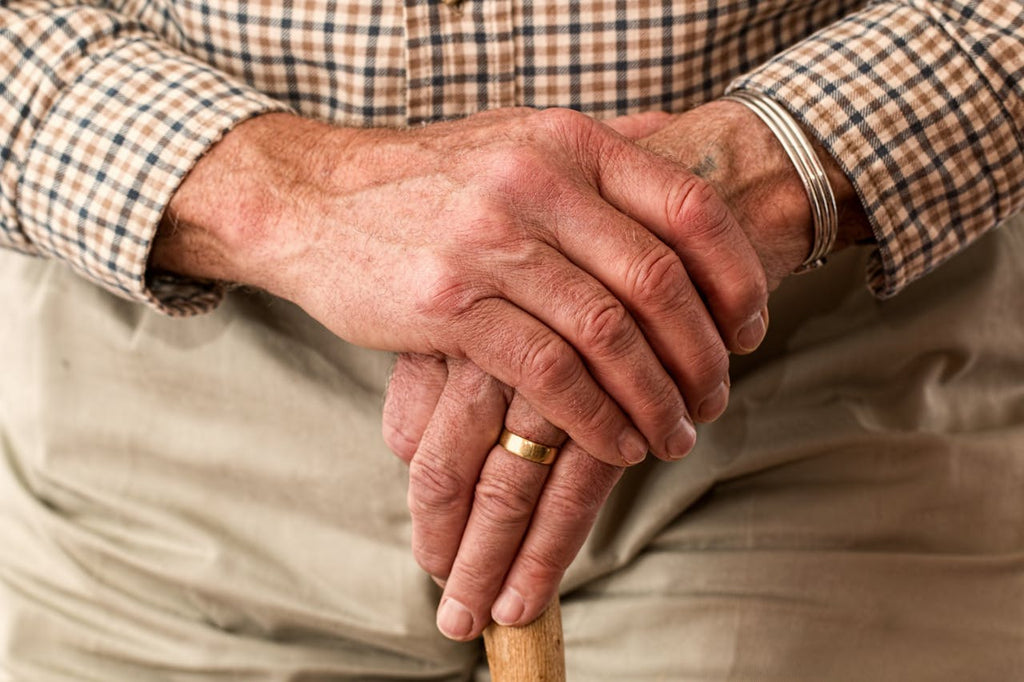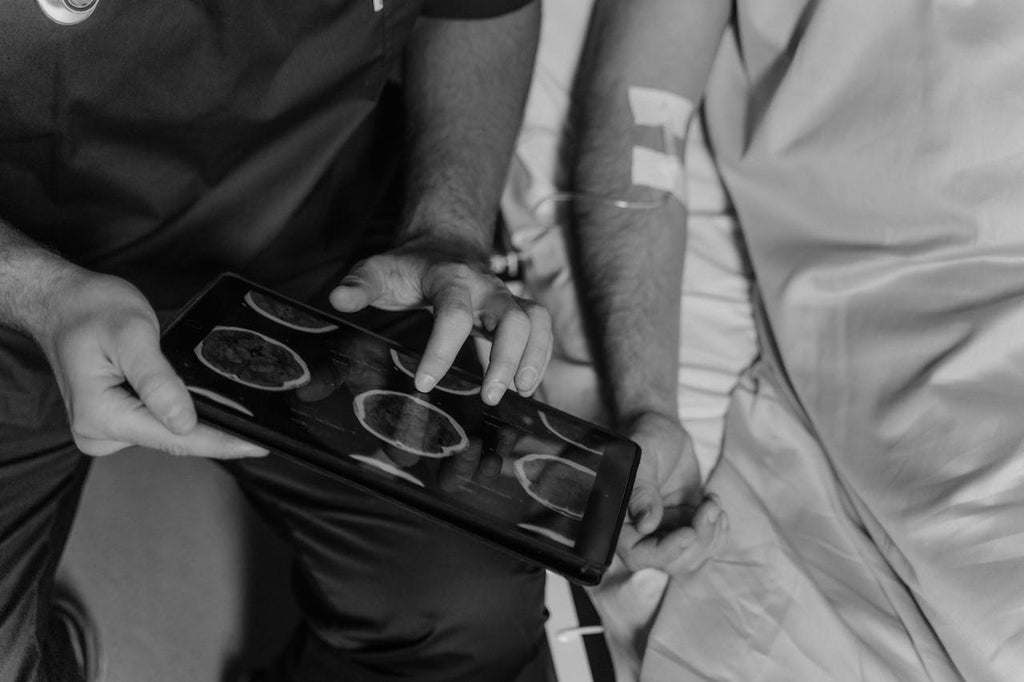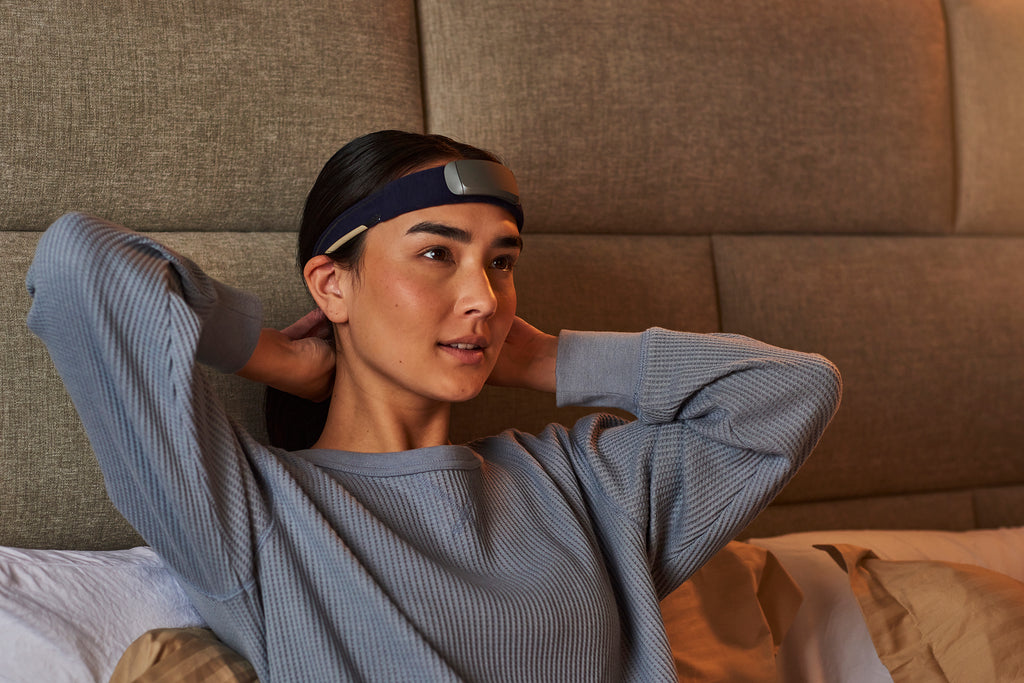Revolutionizing early stroke diagnosis with EEG technology

Strokes currently rank as one of the leading causes of adult disability across North America, ranking as the 3rd and 5th leading cause of death in Canada and the U.S., respectively.
Currently, research suggests that commonly used prehospital stroke scales can miss up to 30% of acute stroke cases and often don’t spot strokes that result from large vessel occlusions (LVO) that benefit most from specialized treatment.
With prehospital diagnosis as critical to stroke outcomes as it is, identifying new, more accurate methods of stroke diagnosis is of key interest to researchers.
One potential pathway is EEG (electroencephalography). In this article, we’ll discuss stroke, its causes, how to diagnose and treat it, and how Muse EEG headbands may increase the accuracy of stroke diagnosis. Let’s get started.
What is a stroke?
Strokes, also called “brain attacks,” occur when blood loss deprives the brain of vital nutrients and oxygen supplied by the blood. This blood loss can result from a particle blocking blood flow through arteries in the brain or when a blood vessel bursts in the brain.
The outcome of either type of stroke can range in severity but ultimately contributes to damage or death of certain parts of the brain. Strokes can cause life-long brain damage that leads to disability and death.
There are three main types of strokes to be aware of:
Ischemic stroke
Ischemic strokes, which account for 87% of stroke cases, result from a blood clot, plaque, or other particles blocking the blood supply to certain regions of the brain. The blockages prevent these regions from receiving oxygen, contributing to brain death.
There are two subtypes of ischemic stroke:
- Embolism - When blood clot or plaque travels from somewhere else in the body and gets stuck in an artery in the brain.
- Thrombosis - When blood clot forms in an artery that supplies blood to the brain.
Hemorrhagic stroke
Hemorrhagic strokes occur when a blood vessel bursts in the brain, leading to blood buildup that can damage surrounding tissue. Roughly 13% of strokes are hemorrhagic strokes, which can result from high blood pressure, ruptured aneurysm, and trauma.
There are two forms of hemorrhagic stroke:
- Intracerebral hemorrhage - An artery in the brain ruptures, flooding the surrounding brain tissue with blood).
- Subarachnoid hemorrhage - Bleeding that occurs and pools in the space between the brain and the thin membranes covering it.
Transient Ischemic Attack (TIA)
TIA’s are often referred to as “mini-strokes,” as they block blood supply to the brain in the same way as strokes, but for a short period of time (usually no longer than five minutes.) While TIAs usually resolve on their own, it’s critical to seek emergency treatment, as transient ischemic attacks are warning signs for future strokes.
The CDC reports that between 10-15% of people who’ve had a TIA will have a major stroke within the next three months. Additionally, over a third of people who experience a TIA and don’t get treatment are expected to experience a major stroke within a year.
What happens in the brain with stroke?
Our brains control everything from our ability to move to our thoughts and feelings to our memories to automatic functions like breathing and heart rate. In order to keep all those processes running and to keep us operating at a healthy level, our brains rely on a constant and substantial flow of oxygen.
When a stroke occurs, access to the flow of oxygen and vital nutrients transported by the blood is blocked. The severity of the stroke depends on which sections of the brain were cut off from oxygen, how long they were oxygen-deprived, and how quickly treatment was delivered.

Who’s at risk for a stroke?
Risk factors are circumstances or variables that put certain people at higher risk potential for developing specific conditions. Commonly recognized stroke risk factors include:
- High blood pressure
- High cholesterol
- Diabetes
- Tobacco use
- Alcohol use
- Physical inactivity
- Obesity
- Heart disease
- Atrial fibrillation (irregular and often rapid heart rate that can cause poor blood flow)
Certain populations may also find themselves at increased risk for stroke due in part to lifestyle and factors like cholesterol and elevated blood pressure. For this reason, the risk of stroke tends to increase with age and may be more prevalent among communities that struggle with health issues like diabetes, high cholesterol, and high blood pressure.
Additional demographic-based risk factors include:
- Age (risk increases with age)
- Gender (women tend to experience higher rates of stroke than men)
- Race (African American and Hispanic men and women tend to experience higher rates of high blood pressure, putting them at higher risk of stroke)
- Family history of strokes
- Having had a previous stroke or TIA
Warning signs of a stroke
Early diagnosis is critical to positioning patients for the best possible health outcomes, so it’s critical to know and look out for signs of a stroke.
- Transient Ischemic Attacks (TIA)
- Sudden difficulty walking, experiencing dizziness
- Sudden lack of coordination and loss of balance
- Sudden difficulty speaking, understanding speech, and confusion
- Sudden weakness or numbness in an arm, leg, or in the face, particularly on one side of the body
- Sudden severe headache without other cause
- Sudden challenges seeing (in one or both eyes)
If you believe you or a loved one is having a stroke or transient ischemic attack, it’s critical you contact your local emergency services provider immediately.
The dangers of stroke mimics
Unfortunately, there are a number of conditions that can copycat stroke symptoms and lead to incorrect diagnoses that delay access to life-saving treatment.
Common stroke mimics include:
- Alcohol intoxication
- Drug overdose/Toxicity
- Seizures and post-seizure, Todd’s Paralysis
- Migraines
- Brain tumors
- Cerebral infections
- Epidural hematoma
- Hypoglycemia
- Metabolic disorders
- Neuropathies (Bell’s Palsy)
- Hypertensive encephalopathy

Stroke diagnosis and treatment
Stroke treatment begins from the moment emergency medical services arrive at your doorstep.
EMS is charged with the vital role of diagnosing stroke and recording when symptoms first appear. This prehospital diagnosis and symptom-onset time are vital, as patients are only eligible for the ischemic stroke medication tissue plasminogen activator (tPA) if they receive care within three hours since the first symptom appeared.
tPA belongs to a class of medicines called thrombolytics, which are used to break down blood clots. tPA stroke medication is widely recognized as one of the most effective treatments, with studies finding that ischemic stroke patients who received tPA had less disability and were more likely to recover fully than those who didn’t receive tPA.
Once at the hospital, medical professionals will take your history and ask for the time when symptoms first appeared before potentially taking brain scans to determine the stroke type.
- If you have had an ischemic stroke and are within the three-hour period, you may be given tPA stroke medication administered through an IV. This treatment presents the best case scenarios for stroke recovery.
-
Intra-arterial thrombolysis, where tPA is inserted with a catheter directly into the blood clot, may be provided up to six hours after the onset of stroke symptoms.
-
A final option for ischemic strokes is mechanical thrombectomy (a device retrieves and removes the clot), which can be used up to eight hours after symptoms occur.
- Surgery or endovascular procedures (where a device to help repair damage and stop bleeding is installed at the location of the broken blood vessel) may be used in the case of a hemorrhagic stroke.
The importance of prehospital diagnosis
As mentioned above, prehospital diagnosis is the first (and most critical) step in treating stroke. For instance, a case of stroke incorrectly diagnosed as something else prolongs access to vital treatment, which is only eligible to patients within the first three hours of symptom onset.
One survey found that while 93% of respondents recognized numbness as a sign of a stroke, only 38% were aware of all the most common symptoms and knew to call emergency services. But even when emergency medical services arrive on the scene, research suggests up to 30% of acute stroke cases and even more strokes caused by a large vessel occlusion may be missed or misdiagnosed.
This delay in diagnosis and receiving proper medical care can make the difference in a stroke patient being eligible to receive the gold standard of care for ischemic strokes.

How can the Muse EEG headband work for stroke detection?
A study by researchers at the University of Alberta explored the potential use of EEG as an early detection tool for strokes. They discovered that during a stroke, significant differences in brain activity occur, which can be mapped by Muse's EEG technology. This could allow for the differentiation between strokes and other conditions that mimic stroke symptoms.
The Muse EEG headband relies on on complex algorithms that map patterns of brain frequencies during different activities. Over time, Muse has collected and mapped brainwave activity that typically occurs during sleep and different meditation states so people can receive real-time feedback on their mental states and train their brains.
So when it comes to stroke detection, the researchers began by mapping the many layers of brain activity that occur in the early stages after a stroke.
Researchers discovered that in the early phases following a stroke, blood flow to the brain is impaired, leading to a decrease in the fast brainwave frequencies of alpha and beta and increases in the slow frequencies of theta and delta.
This change in brainwave activity can be accurately mapped using EEG technology, which allows for the differentiation between strokes and conditions that mimic stroke symptoms. Muse EEG wearables have demonstrated this capability, as studies have shown that they can achieve a 76% accuracy rate in detecting moderate and large strokes, thereby potentially increasing the accuracy of prehospital stroke diagnosis
According to the 2024 Muse Brain Health Report, only 9% of people have used an at-home EEG to evaluate or receive treatment for a brain health condition. While further research is needed, this study highlights the promising potential of EEG technology to provide swift, accurate, and life-saving diagnosis.
Click here to discover additional benefits of Muse neurofeedback headbands >>
